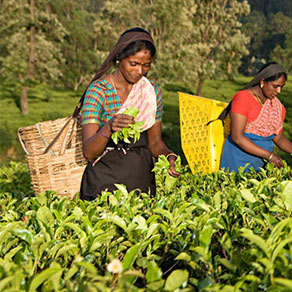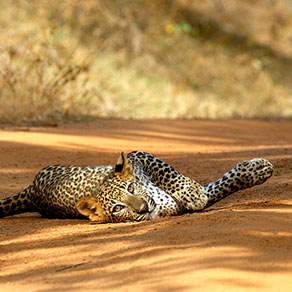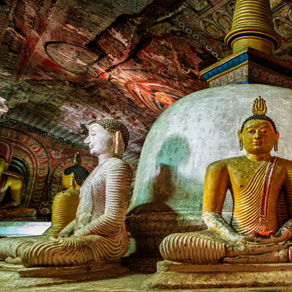Beyond the Beaches: Exploring Sri Lanka’s Historical Heritage
Situated off the southern coast of India, Sri Lanka, formerly known as Ceylon, is an island nation steeped in history. Its strategic location on the Indian Ocean’s ancient maritime routes made it a focal point for cultural and commercial exchanges, connecting the East and the West.
The island’s history can be traced back to the arrival of the legendary Prince Vijaya from India, around 500 BCE, marking the start of the Anuradhapura Kingdom. Sri Lanka’s rich tapestry of history weaves together periods of native dynastic rule, punctuated by invasions from South India, followed by centuries of colonial dominance by the Portuguese, Dutch, and British.
Sri Lanka’s historical narrative is characterised by a unique fusion of indigenous culture, Buddhist philosophy, foreign influence, and resilience against external powers. Its ancient cities, some of which have served as royal capitals, bear testament to this complex and fascinating past.
From the sacred city of Anuradhapura, known for its impressive dagobas and the revered Sri Maha Bodhi tree, to the rock fortress of Sigiriya with its captivating frescoes, each city offers a window into a different era of Sri Lanka’s history.
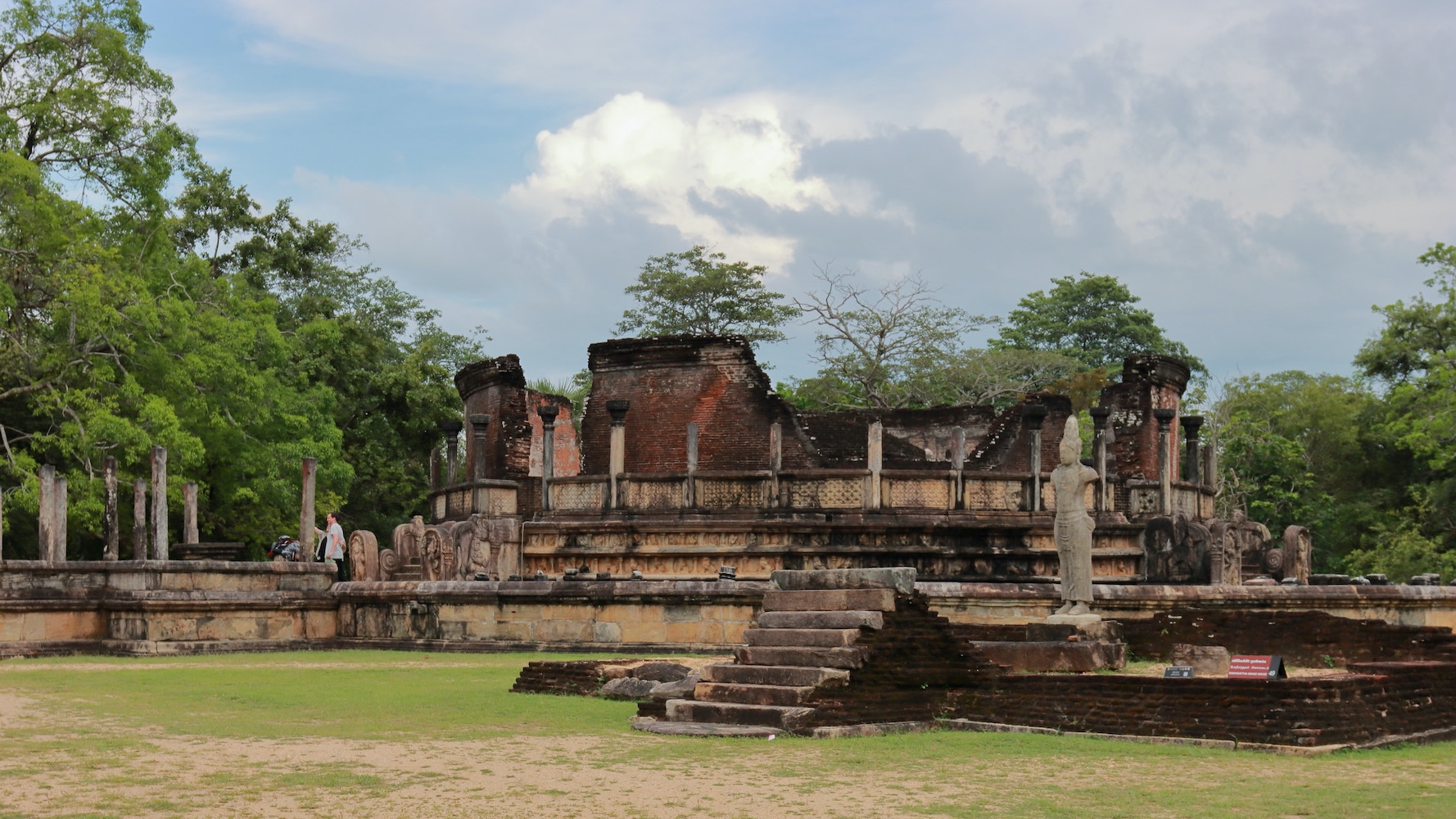
Polonnaruwa
The city of Polonnaruwa is one of the best-preserved examples of Sri Lanka’s ancient civilisations. Founded in the 11th century, it served as the country’s capital for nearly 200 years. This royal ancient city’s historical prominence resulted from the endeavours of King Vijayabahu I, who ascended the throne after liberating the island from the Chola invaders. Polonnaruwa then flourished under King Parakramabahu I, also known as the ‘Great Builder’.
The city’s ruins are exceptionally well-preserved, offering visitors a glimpse of past Sri Lankan glory. Expect to see intricate carvings, towering brick walls and the remarkable Gal Vihara – a series of large Buddha statues hewn directly from a single granite wall. Given the city’s size, bicycles are a popular way to explore the expansive complex.
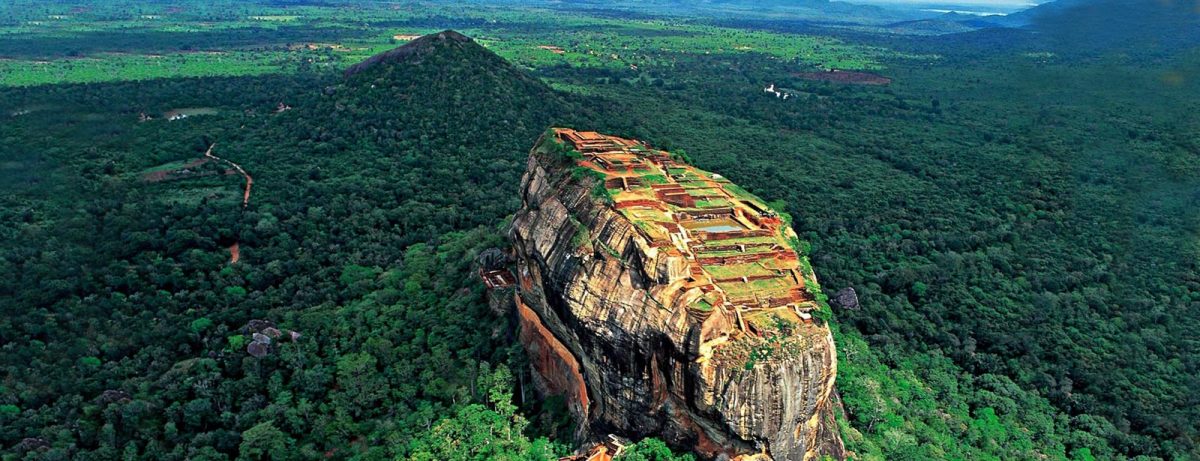
Sigiriya
The city of Sigiriya, or Lion’s Rock, is a UNESCO World Heritage Site and one of Sri Lanka’s most iconic ancient cities. The site was selected by King Kasyapa (477 – 495 CE) for his new capital, moving from the traditional capital of Anuradhapura for reasons of personal security. His ambitious project culminated in a fortified complex atop a colossal rock column nearly 200 metres high.
Visitors to Sigiriya are presented with a remarkable fusion of nature and human ingenuity. The rock fortress is surrounded by gardens, reservoirs, and other architectural elements. As one ascends the rock, the ancient frescoes, or ‘Sigiriya Damsels’, and a pair of colossal lion’s paws carved into the rock serve as poignant reminders of the city’s grandeur. Be prepared for a steep climb, but the panoramic view from the top is well worth the effort.
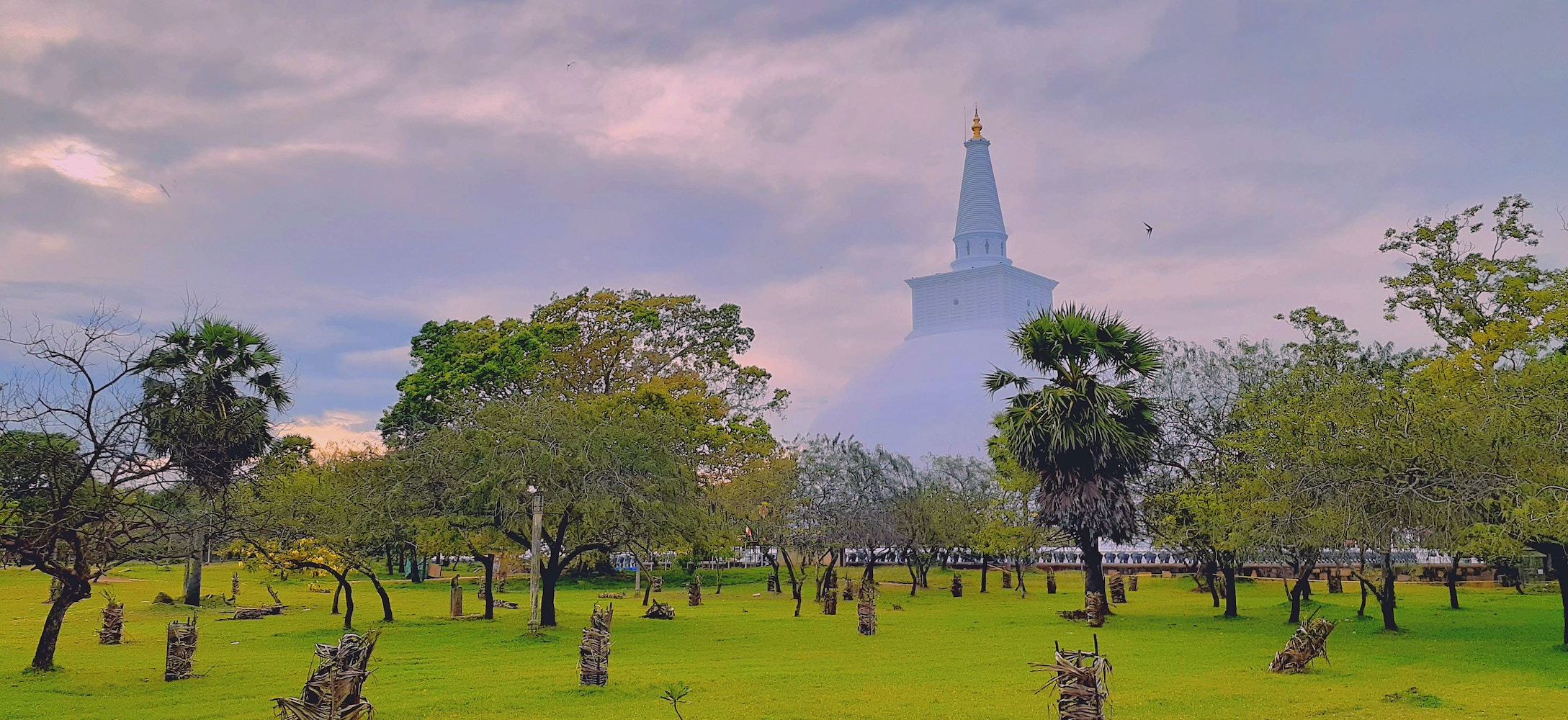
Anuradhapura
Anuradhapura, one of the oldest continuously inhabited cities in the world, was the heart of Theravada Buddhism for many centuries. Established in the 4th century BCE, it was the capital of the Anuradhapura Kingdom until the 10th century CE.
Today, the ancient city remains a sacred Buddhist pilgrimage site. It’s home to the Sri Maha Bodhi, a sacred fig tree propagated from the original Bodhi tree under which Buddha achieved enlightenment. Other attractions include colossal dagobas (Buddhist stupas), ancient pools, and the remnants of palaces. Anuradhapura offers a contemplative atmosphere, steeped in a deep sense of spirituality and history.
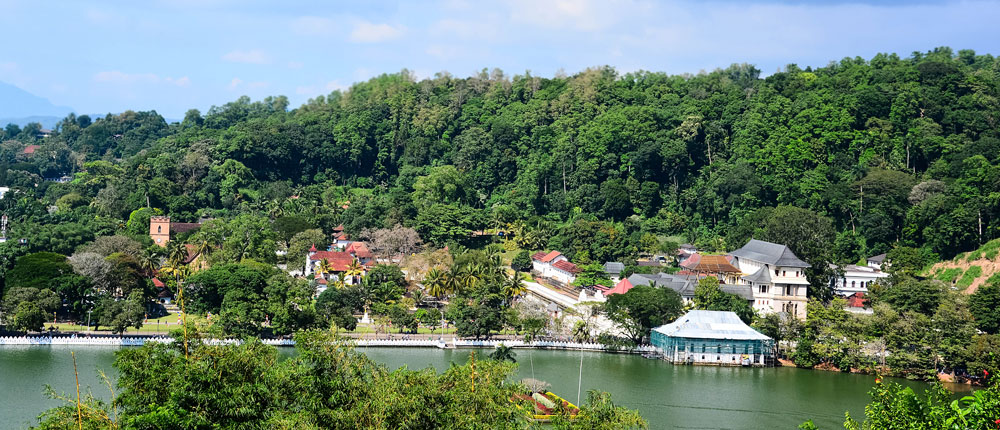 Kandy
Kandy
The last royal capital of Sri Lanka, Kandy, is situated amidst the hills in the country’s central region. Its origins can be traced back to the late 15th century, and it remained independent until the early 19th century, long after coastal regions had succumbed to colonial powers.
The city is particularly known for the Temple of the Tooth, or Sri Dalada Maligawa, which houses a tooth relic of the Buddha. The temple is an architectural marvel, adorned with intricate wood and ivory carvings. In addition to the temple, visitors can enjoy the Royal Palace and Kandy Lake, both of which contribute to the city’s unique charm. Kandy offers an insight into the country’s resistance to colonial forces and its preservation of native customs and traditions.
Dambulla Cave Temple
Dambulla Cave Temple, also known as the Golden Temple of Dambulla, is a World Heritage Site dating back to the 1st century BCE. This expansive complex, situated in the central part of Sri Lanka, contains over 80 caves, of which five are of significant interest. These main caves house a collection of Buddhist murals and statues, some gifted by various ancient kings, making it one of the largest and best-preserved cave temple complexes in the country.
A visit to Dambulla takes you through a series of chambers adorned with intricate murals depicting the life of Buddha and various historical events. The caves are quite cool, a welcome respite from the tropical heat. An ascent to the cave temple offers panoramic views of the surrounding plains, enhancing the site’s spiritual tranquillity.
Yapahuwa
Yapahuwa is a rock fortress situated in the northwest of Sri Lanka. Although it briefly served as the capital in the 13th century during the reign of King Buvanekabahu, it is less frequented by visitors compared to other ancient cities. This gives Yapahuwa an air of serene isolation, allowing visitors to explore at a leisurely pace.
The main attraction is a stone stairway, ornately carved with a blend of religious and secular motifs. It leads up to the former Temple of the Tooth, which once housed the sacred Buddha tooth relic. Climbing this dramatic stairway is a journey back in time, and the view from the top, spanning miles of lush greenery, is quite rewarding.
Mihintale
Located just east of Anuradhapura, Mihintale is a mountain peak often regarded as the cradle of Buddhism in Sri Lanka. The site is believed to be where King Devanampiya Tissa first encountered Buddhism through the Indian monk Mahinda in the 3rd century BCE.
The site is a complex of shrines, stupas and caves. Visitors can expect a considerable climb, with 1,840 steps leading to the summit, but the journey is punctuated by fascinating historical and religious monuments. At the top, the Maha Seya stupa and the panoramic views of the surrounding countryside create a captivating spiritual ambiance.
YONDER SUGGESTIONS
Yonder is a specialist India tour operator, including tailor-made, luxury holidays to Sri Lanka which can include any of the must see places discussed in this article.
All Yonder itineraries are crafted on a tailor-made, one-off basis, so you can be sure that your holiday will be as individual as you are.
Situated off the southern coast of India, Sri Lanka, formerly known as Ceylon, is an island nation steeped in history. Its strategic location on the Indian Ocean’s ancient maritime routes made it a focal point for cultural and commercial exchanges, connecting the East and the West.
The island’s history can be traced back to the arrival of the legendary Prince Vijaya from India, around 500 BCE, marking the start of the Anuradhapura Kingdom. Sri Lanka’s rich tapestry of history weaves together periods of native dynastic rule, punctuated by invasions from South India, followed by centuries of colonial dominance by the Portuguese, Dutch, and British.
Sri Lanka’s historical narrative is characterised by a unique fusion of indigenous culture, Buddhist philosophy, foreign influence, and resilience against external powers. Its ancient cities, some of which have served as royal capitals, bear testament to this complex and fascinating past.
From the sacred city of Anuradhapura, known for its impressive dagobas and the revered Sri Maha Bodhi tree, to the rock fortress of Sigiriya with its captivating frescoes, each city offers a window into a different era of Sri Lanka’s history.

Polonnaruwa
The city of Polonnaruwa is one of the best-preserved examples of Sri Lanka’s ancient civilisations. Founded in the 11th century, it served as the country’s capital for nearly 200 years. This royal ancient city’s historical prominence resulted from the endeavours of King Vijayabahu I, who ascended the throne after liberating the island from the Chola invaders. Polonnaruwa then flourished under King Parakramabahu I, also known as the ‘Great Builder’.
The city’s ruins are exceptionally well-preserved, offering visitors a glimpse of past Sri Lankan glory. Expect to see intricate carvings, towering brick walls and the remarkable Gal Vihara – a series of large Buddha statues hewn directly from a single granite wall. Given the city’s size, bicycles are a popular way to explore the expansive complex.
Sigiriya
The city of Sigiriya, or Lion’s Rock, is a UNESCO World Heritage Site and one of Sri Lanka’s most iconic ancient cities. The site was selected by King Kasyapa (477 – 495 CE) for his new capital, moving from the traditional capital of Anuradhapura for reasons of personal security. His ambitious project culminated in a fortified complex atop a colossal rock column nearly 200 metres high.
Visitors to Sigiriya are presented with a remarkable fusion of nature and human ingenuity. The rock fortress is surrounded by gardens, reservoirs, and other architectural elements. As one ascends the rock, the ancient frescoes, or ‘Sigiriya Damsels’, and a pair of colossal lion’s paws carved into the rock serve as poignant reminders of the city’s grandeur. Be prepared for a steep climb, but the panoramic view from the top is well worth the effort.
Anuradhapura
Anuradhapura, one of the oldest continuously inhabited cities in the world, was the heart of Theravada Buddhism for many centuries. Established in the 4th century BCE, it was the capital of the Anuradhapura Kingdom until the 10th century CE.
Today, the ancient city remains a sacred Buddhist pilgrimage site. It’s home to the Sri Maha Bodhi, a sacred fig tree propagated from the original Bodhi tree under which Buddha achieved enlightenment. Other attractions include colossal dagobas (Buddhist stupas), ancient pools, and the remnants of palaces. Anuradhapura offers a contemplative atmosphere, steeped in a deep sense of spirituality and history.
 Kandy
Kandy
The last royal capital of Sri Lanka, Kandy, is situated amidst the hills in the country’s central region. Its origins can be traced back to the late 15th century, and it remained independent until the early 19th century, long after coastal regions had succumbed to colonial powers.
The city is particularly known for the Temple of the Tooth, or Sri Dalada Maligawa, which houses a tooth relic of the Buddha. The temple is an architectural marvel, adorned with intricate wood and ivory carvings. In addition to the temple, visitors can enjoy the Royal Palace and Kandy Lake, both of which contribute to the city’s unique charm. Kandy offers an insight into the country’s resistance to colonial forces and its preservation of native customs and traditions.
Dambulla Cave Temple
Dambulla Cave Temple, also known as the Golden Temple of Dambulla, is a World Heritage Site dating back to the 1st century BCE. This expansive complex, situated in the central part of Sri Lanka, contains over 80 caves, of which five are of significant interest. These main caves house a collection of Buddhist murals and statues, some gifted by various ancient kings, making it one of the largest and best-preserved cave temple complexes in the country.
A visit to Dambulla takes you through a series of chambers adorned with intricate murals depicting the life of Buddha and various historical events. The caves are quite cool, a welcome respite from the tropical heat. An ascent to the cave temple offers panoramic views of the surrounding plains, enhancing the site’s spiritual tranquillity.
Yapahuwa
Yapahuwa is a rock fortress situated in the northwest of Sri Lanka. Although it briefly served as the capital in the 13th century during the reign of King Buvanekabahu, it is less frequented by visitors compared to other ancient cities. This gives Yapahuwa an air of serene isolation, allowing visitors to explore at a leisurely pace.
The main attraction is a stone stairway, ornately carved with a blend of religious and secular motifs. It leads up to the former Temple of the Tooth, which once housed the sacred Buddha tooth relic. Climbing this dramatic stairway is a journey back in time, and the view from the top, spanning miles of lush greenery, is quite rewarding.
Mihintale
Located just east of Anuradhapura, Mihintale is a mountain peak often regarded as the cradle of Buddhism in Sri Lanka. The site is believed to be where King Devanampiya Tissa first encountered Buddhism through the Indian monk Mahinda in the 3rd century BCE.
The site is a complex of shrines, stupas and caves. Visitors can expect a considerable climb, with 1,840 steps leading to the summit, but the journey is punctuated by fascinating historical and religious monuments. At the top, the Maha Seya stupa and the panoramic views of the surrounding countryside create a captivating spiritual ambiance.
YONDER SUGGESTIONS
Yonder is a specialist India tour operator, including tailor-made, luxury holidays to Sri Lanka which can include any of the must see places discussed in this article.
All Yonder itineraries are crafted on a tailor-made, one-off basis, so you can be sure that your holiday will be as individual as you are.

 USD
USD
